10 Tips to Enhance Small Healthcare Practice Profit
Managing a healthcare practice can be an incredibly difficult challenge in the current environment.
Practices face headwinds regarding labor shortage pressures, increase costs, and ‘the new normal’ for patient volumes and fluctuations. To make matters worse, large payers are often unwilling to increase claim reimbursements to account for these challenges, meaning practices must make more with less.
The need for improved operational finance within small-to-medium-sized healthcare practices is more essential than ever; finance leaders must provide financial visibility to make the necessary improvements to keep the practice growing and profitable. Here are 10 simple changes your finance team can implement to improve your practice’s bottom line, without sacrificing staff morale or quality care:
- Review claim amount and revenue collected per visit monthly to ensure maximum value earned per encounter. Your finance team should consistently review the total amounts billed each month, and what is subsequently collected from insurance to identify deviations from historical and expected data.
- Is the average E&M code per encounter going up or down, and why? Are you seeing a different mix of patient visit types and what is driving it? Is the profit per patient visit increasing or decreasing?
- Monitoring charges and collections per visit ensures that payer’s contracted rates are being paid and give an accurate breakdown of patients per payer, which can be helpful for future payer negotiations.
- Monitoring the time lapse between claim creation and full payment (time in accounts receivables) is helpful for a variety of reasons, including alerting the practice of payer issues or disputes, and cash flow planning. Understanding your accounts receivables can be helpful in securing lines of credit from a bank to ease cash availability.
Learn how Ballast measures and monitors billing data for healthcare clients.
- Review and report profit per patient visit. Determine the driving cost factors for a healthcare facility when the volume of patient visits change. On average, how much does your practice spend treating a patient, and how much does that vary depending on the nature of the visit? How does seasonality, and/or staffing pressures change your practice’s gross profits? Answers to these questions can help you do the following:
- Negotiate your largest variable costs with your vendors. Many practices don’t realize that many of their largest costs are negotiable with their vendors. Practices that purchase significant volumes of supplies should regularly review their supplier relationships to ensure they are getting the best price AND terms with their suppliers. Learn more about how Ballast helps healthcare practices manage supplier relationships.
One Ballast client saved ~$250,000 a year in supply costs by negotiating pricing with its primary distributor of supplies.
-
- Understand the impact of labor on your profit per visit and staff appropriately. How much does it cost the practice if providers see one less patient per hour? Practices need to understand the embedded costs of the provider compensation, as well as all the clinical staff costs and how much might be saved or is wasted if throughput (patients per staff-hour) fluctuates. Your finance team should routinely provide metrics to your leadership team on throughput, ideally on a provider-basis. This can be incredibly valuable information for your operations team when establishing schedules which:
- Maximize revenue per provider hour
- Reduce required provider hours to essential patient-care functions (ie. Hire scribes if excess provider time spent charting)
- Provide sufficient capacity for quality care
- Provide sufficient capacity for sustainable staff morale
- Determine appropriate compensation/bonus plans for staff using objective data
- Understand the impact of labor on your profit per visit and staff appropriately. How much does it cost the practice if providers see one less patient per hour? Practices need to understand the embedded costs of the provider compensation, as well as all the clinical staff costs and how much might be saved or is wasted if throughput (patients per staff-hour) fluctuates. Your finance team should routinely provide metrics to your leadership team on throughput, ideally on a provider-basis. This can be incredibly valuable information for your operations team when establishing schedules which:
- Actively monitor and track inventory of supplies purchased and used. Efficient management of inventory on-hand can help a practice:
-
- Understand how much inventory is used on patients rather than purchased (necessary to review true profit per patient visit)
- Reduce practice investment in excess inventory to improve cash flow
- Reduce costs of excess inventory related to unnecessary storage, spoilage or slippage
- Creating an inventory management process is not as difficult or tedious of a task as one might expect.
- State revenues and expenses on a ‘modified accrual-basis’. Measuring and monitoring many of the previous items will be far more difficult to accomplish if your profit & loss doesn’t show you what occurs in the months that your revenues are earned, and expenses are incurred. Producing accrual-basis revenue for payer-based medical practices is challenging, here is how we approach:
- Accounting for medical claims on an accrual basis
- Accounting for supplies/inventory usage on an accrual basis
- Accounting for labor/staff expenses on an accrual basis
- Build a financial forecast to measure the impact of key decisions. A financial forecast that is rooted in the historical data of the practice is imperative for understanding future trends. Forecasting the next several months of revenues, expenses, and other impacts to cash flow, while predicting the next 2-3 years trends will ensure the practice’s Executive team a clear vision of the financial direction of the practice. The financial forecast should be a tool that leadership regularly reviews (monthly at a minimum), and use to scenario-plan new service offerings, hirings, new facility buildouts, etc.
- Create an annual plan and measure performance against the plan. Use the financial forecast as a tool to proactively manage the operations of your business. Simplifying the key goals to 3-4 of the most important will allow easier retrospective analysis and allow your team to better focus on just the essentials. Things to consider:
- Make your goals SMART – an example of a SMART goal for a healthcare practice might be:
- “Increase patient visit volume in 2023 by 8% above 2022, of which 5% comes from new patients.”
- “Improve profit margins by a minimum of 5% by reducing supply costs per visit”
- Determine the requirements to achieve those goals, and what roadblocks or risk factors stand in the way. What investments in sales & marketing does the practice need to make to grow visit volumes by 8%? Does the practice have sufficient staff capacity to handle that kind of increase? Break the achievement of those goals into smaller steps, set deadlines to achieve, and assign responsibility to a key individual for achievement (i.e.: “create a marketing budget to allocate spend by channel for 2023 by January – Head of Marketing’s responsibility”).
- Measure the upside and downside to achievement/failure of these goals. Use the financial forecast model to determine if the rewards outweigh the risks for attempting to accomplish the goals. What will happen to profit and cash flow if your practice achieves its goals? What will happen if you make the necessary investments, and the practice does not achieve the desired outcome? Forecasting these in advance can help the leadership team of a practice prioritize the objectives that provide the best risk-adjusted benefit to the practice.
- Use your accounting data ecosystem to track progress toward those goals. Just as a practitioner has regular ‘check-ups’ with his/her patients to monitor the patient’s health towards their desired outcomes, the executives of a healthcare practice should review the financial health of the practice in comparison to the goals set out by the organization during its planning session. What goals did you focus on achieving this year, and what do your financials tell you about how you are tracking toward those goals? What improvements need to be made to reach them? What unforeseen circumstances caused you to fall short or exceed your expectations?


